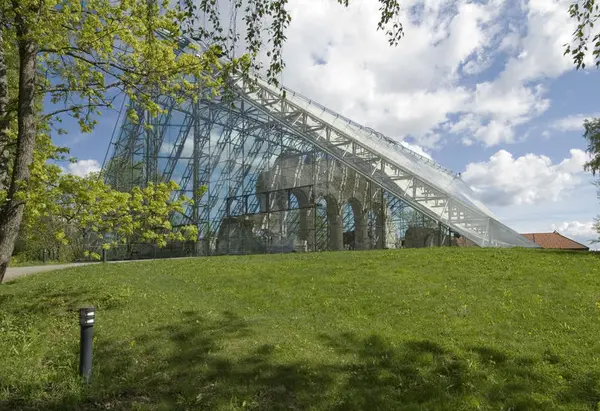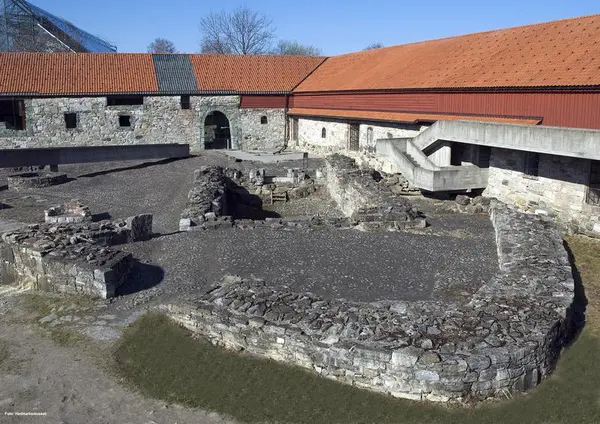Next to the cathedral ruins you find the remains of the medieval town, Hamarkaupangen, and the magnificent ruins of the cathedral inside a fabulous protective structure of glass and steel, “the glass cathedral”, is the main attraction.
The Glass Cathedral
The construction of the church started with the founding of the Hamar diocese in 1152/53, and around the year 1200 the cathedral was complete in Romanesque style. In the 14th century it was expanded in Gothic style. During the next three centuries this was the most important site between Oslo and Trondheim, but with the Reformation in 1536/37 Norway no longer was a Catholic country and the cathedral fell out of use. During the Nordic Seven Years War, in 1567, Swedish soldiers blew up the bishop’s palace and the church caught fire and was left in ruins.
-
Anno Domkirkeoddens fotoarkiv
In 1987 it was decided to build a protective structure to conserve the remains of the cathedral. This was completed in 1998 and architect Kjell Lund’s massive “cathedral” of steel and glass, known as “Hamardomen”, had given the museum not only a great shelter to preserve the ruins, but also a modern, acoustic hall highly fit for concerts and religious purposes.
The Storhamar Barn
In the barn from the farm Storhamar you find the permanent exhibitions. This barn was built in the 18th and 19th century, using the ruins of the medieval bishop’s palace as parts of the walls. When turning the building into a museum, the architect Sverre Fehn included modern installations which respectfully allow the historical remains to speak for themselves as well as keeping the opportunity for further archeological excavations.
-
Anno Domkirkeoddens fotoarkiv
The ruins of the courtyard and the bishop's fortress are continuously under preservation. Though it is mainly basements and floors which have survived throughout the ages, the atmosphere from the Middle Ages may still be felt whilst walking among these ruins.

